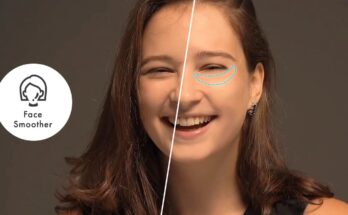In today’s digital age, having visually appealing images can make or break your content. Whether you’re writing a blog, creating a portfolio, or curating a social media page, the look of your images can draw in or deter an audience. That’s where Haypic Photo Editor comes in—an intuitive tool that enables anyone to craft professional-grade visuals for their articles.
H2: Introduction to Haypic Photo Editor
Haypic Photo Editor is more than just a photo-editing software; it’s a creative powerhouse designed for all types of users, from novices to professionals. Whether you’re editing images for a blog, an e-commerce platform, or your social media profile, Haypic has tools that make the process a breeze.
Launched as a lightweight alternative to complex editors like Photoshop, Haypic is designed to streamline the image editing process without compromising on quality. The tool focuses on user-friendly design while packing powerful features that can transform even the simplest images into visual masterpieces.
H2: Key Features of Haypic Photo Editor
H3: Image Editing Tools
Haypic provides a full suite of basic editing tools that anyone can use to polish up their images. You can easily crop, resize, and apply filters to any photo. Whether you’re sharpening a family photo or adjusting the brightness of a product image, the interface is intuitive and fast, allowing for easy edits without the steep learning curve of more professional software.
H3: Advanced Tools
For more advanced users, Haypic offers features such as layer editing, object removal, and AI-enhanced retouching. The layer editing function allows users to stack multiple images or elements, creating dynamic and complex visuals. With AI tools, unwanted objects can be removed from images seamlessly, leaving behind a polished final product.
H3: Customizing Text and Fonts
Typography is a huge part of image-based content, and Haypic has a wide array of text customization options. You can adjust fonts, choose from hundreds of font styles, and fine-tune colors to perfectly match your image’s tone.
H2: How to Create Stunning Headers in Haypic
H3: Adding Text to Images
Creating a standout header begins with good typography. In Haypic, you can easily add text to any image by selecting the “Text” tool. Choose from hundreds of fonts and customize the size, alignment, and style to suit your needs. Pro tip: use bold, contrasting colors to ensure your header text stands out.
H3: Optimizing Header Design for Articles
A great header does more than just look good—it should entice readers to dive into the content. By strategically placing elements like text and images, you can create a visual hierarchy that guides the reader’s eye naturally. Keep your design clean and simple while ensuring your title is clear and easy to read
H2: Benefits of Using Haypic for Blog Article Creation
For bloggers, Haypic offers a quick, intuitive solution to creating high-quality visuals without the need for professional design experience. The streamlined interface allows for rapid edits, which means you spend less time adjusting images and more time writing. Additionally, having crisp, polished images enhances your blog’s overall aesthetic, increasing reader engagement.
H2: Haypic vs Other Photo Editing Tools
While Photoshop and Canva are well-known in the realm of photo editing, Haypic strikes a balance between user-friendliness and feature depth. Unlike Photoshop, which can be overwhelming for beginners, Haypic offers a cleaner, less complicated interface. Meanwhile, Haypic provides more customization options than Canva, particularly for text editing, making it a favorite for bloggers and writers.
H2: SEO and Visual Content: Why It Matters
H3: How Images Impact SEO
Images aren’t just for aesthetics; they play a crucial role in search engine optimization (SEO). Properly optimized images can increase your website’s load time, enhance accessibility, and boost search rankings. Key factors include file size, alt text, and relevance to the content.
H3: Using Haypic to Optimize Image SEO
With Haypic, optimizing images for SEO is simple. The tool allows you to compress files without losing quality and provides options for adding alt text directly within the interface. By resizing and compressing images, you ensure your blog loads quickly, which is essential for retaining visitors and improving your rankings.
H2: User Interface and Ease of Use
Haypic’s interface is clean, modern, and incredibly intuitive. Even if you’ve never used photo-editing software before, the layout makes it easy to navigate. All tools are conveniently located on a single toolbar, and the drag-and-drop functionality further simplifies the editing process.
H2: Common Issues and Solutions with Haypic
Like any software, Haypic comes with its own set of challenges. Some users report occasional lag when using large files, but this can usually be fixed by compressing images before uploading. Additionally, ensuring that your device’s drivers are up to date can help alleviate any technical hiccups.
H2: Tips for Creating Eye-Catching Article Headers
H3: Visual Balance and Alignment
Creating a well-balanced image is key to making your headers look professional. In Haypic, you can use grid lines and alignment tools to perfectly position your text and other design elements. This ensures that nothing looks out of place and the final result is aesthetically pleasing.
H3: Color Schemes and Contrast
Choosing the right color scheme is vital for an eye-catching header. Use contrasting colors between your text and background to ensure readability. Haypic’s color picker allows you to choose any color, or you can use preset palettes to ensure your header looks polished and cohesive.
H2: Integrating Haypic with Blogging Platforms
Once you’ve finished editing your image in Haypic, integrating it into your blog is as simple as downloading the file in your desired format (JPG, PNG, etc.) and uploading it to your platform. Haypic is compatible with most major blogging platforms like WordPress, Blogger, and Squarespace.
H2: FAQs about Haypic Photo Editor
- Is Haypic free to use?
Yes, Haypic offers a free version with basic features, but there’s also a premium plan for advanced tools. - Can I use Haypic on my mobile device?
Yes, Haypic is available for both desktop and mobile platforms. - Does Haypic support multiple file formats?
Absolutely, Haypic supports common formats like JPEG, PNG, and even SVG for vector graphics. - How can I remove backgrounds in Haypic?
The background removal tool in Haypic is powered by AI, making it incredibly easy to erase unwanted elements with just one click. - Can I collaborate with others in Haypic?
Yes, Haypic allows multiple users to collaborate on the same project, making it a great tool for teams. - Does Haypic save my projects automatically?
Yes, Haypic has an autosave feature, ensuring you don’t lose your work.
H2: Conclusion
Haypic Photo Editor is a powerful, user-friendly tool that simplifies the process of creating beautiful visuals for your articles. Whether you’re writing a blog or just looking to enhance your online content, Haypic provides the tools you need to create professional-looking images in minutes.




